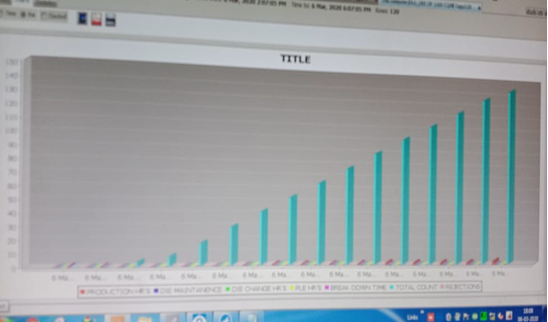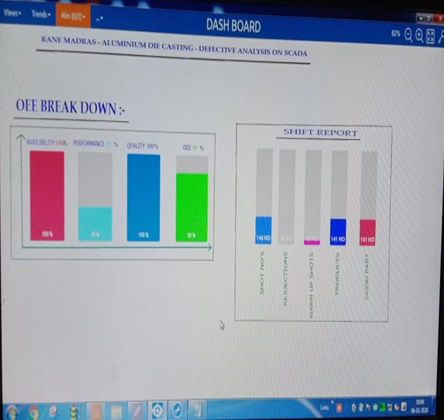

Overall equipment effectiveness is a measure of manufacturing operations performance and productivity, expressed as a percentage. OEE indicates the degree to which a manufacturing process is truly productive and serves as a general and inclusive measurement of how well a company’s manufacturing operations are performing. It’s important to note that because OEE is a general measure, its value comes from being a big-picture indicator rather than a specific management tool.
Overall Equipment Effectiveness (OEE) is one of the fundamental concepts in lean manufacturing and a key performance driver for any production plant, production unit, workshop or individual station.
Having a high OEE is a mark of a highly efficient factory with high productivity. A low OEE, on the other hand, means there is a “hidden factory” with unused resources that are producing losses where there should be value.
We use OEE because it helps us to see and understand our production process. By quantifying and visualizing all losses from the production line and machines, OEE not only shows what we produced with our resources but also what we could have produced. In other words, OEE and machine downtime tracking help us understand the true potential of our factories.

It also helps us focus our resources and direct our maintenance strategy in a more precise way. Because it reveals to us what is happening on the shop floor and what the actual problems are, e.g. losses caused by organizational factors such as staffing, material supply, planning, and changeovers.
OEE is not only an indicator of performance but more importantly a continuous improvement tool that allows us to eliminate waste and target “the six main losses” that are present in virtually every production facility.
By using key OEE concepts such as The Six Big Losses waste exposed by tracking OEE can be understood and efficiencies can be improved.
The components of this framework are:
OEE = Availability x Performance x Quality
Availability refers to the machine being available for production when scheduled. At the most basic level, when a process is running it is creating value for the end user. When a process is stopped, it’s creating a cost with no associated value. Whether it’s due to mechanical failure, raw materials or operator issues, the machine is either producing or not producing. By comparing scheduled run time to actual run time, the availability component of OEE allows for a determination of lost production due to down time.
Performance is determined by how much waste is created through running at less than optimal speed. By comparing the actual cycle times against ideal cycle times, OEE allows for a determination of how much production was lost by cycles that did not meet the ideal cycle time.
Quality focuses on identifying time that was wasted by producing a product that does not meet quality standards. By comparing the quantity of good to reject parts the percent of time actually adding value by producing good product is exposed.

In an industry like Die casting automotive, a die casting machine is more important for production and quality. In another words we can say that the die casting machine is the heart of casting industry and this machine is so complicated also. Due to huge structure the machine may have no. of break downs. Due to this break downs may effect production hours. Break downs will happen due to several reasons and all the parameters define in HMI which will gives the causes of break downs. Which will help to increase the production hours and efficiency of a machine. By logging the break downs in SCADA, we can able to see the whole performance of a machine. By calculating the no. of parameters like break down time, no of shots, rejected shots, production hours, plant hours, shift wise data etc., will gives the machine performance accurate and this data will help us to avoid the future break downs & increase the machine performance.
+91 9030070085
+91 7801063999
#501C, Bankers Chambers,
A S Raju Nagar, Kukatpally,
Hyderabad Telangana -500 072.